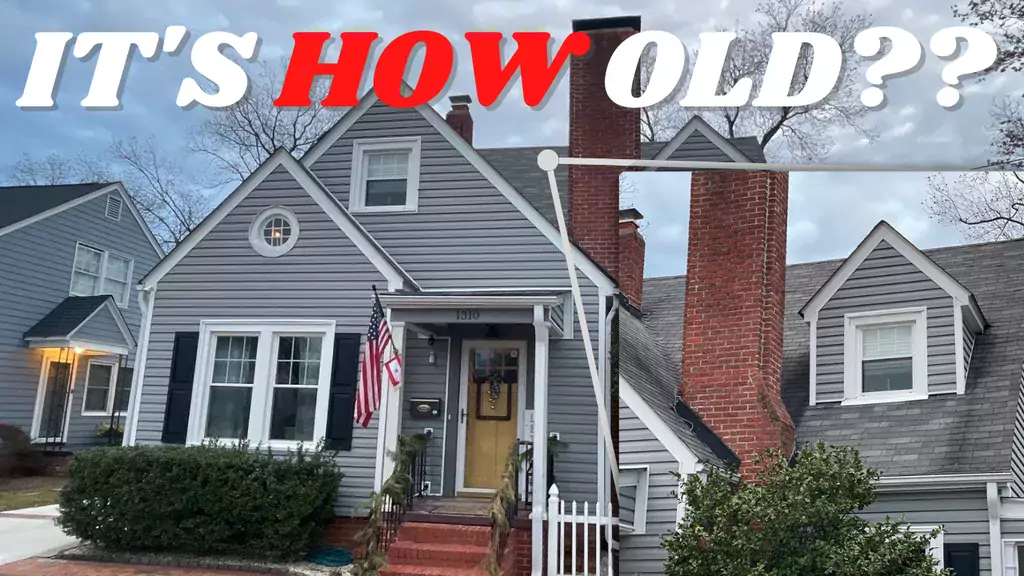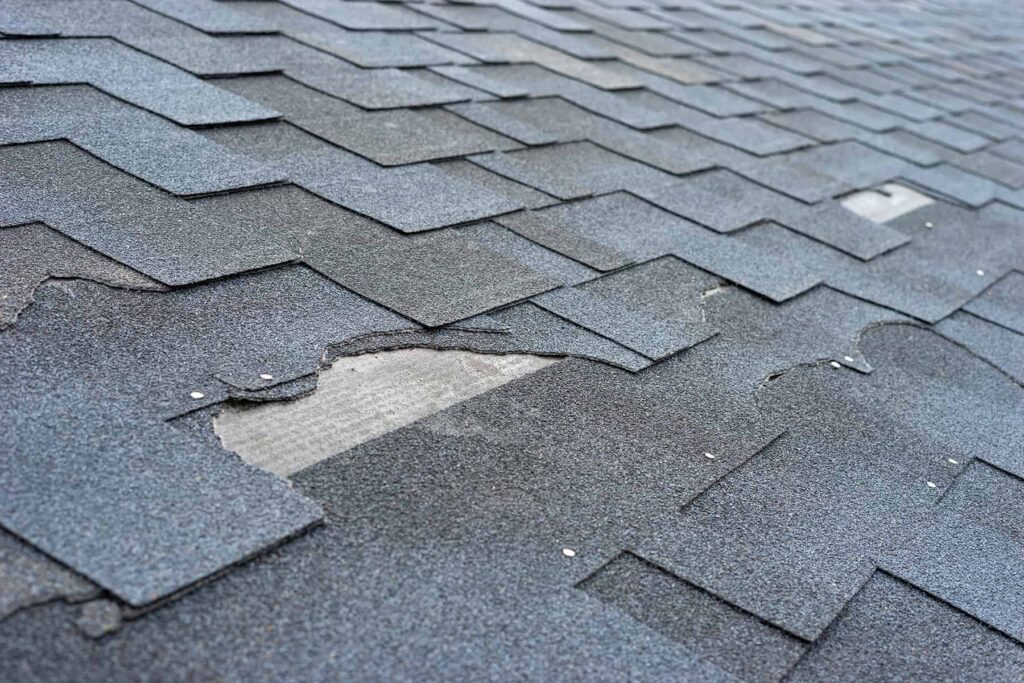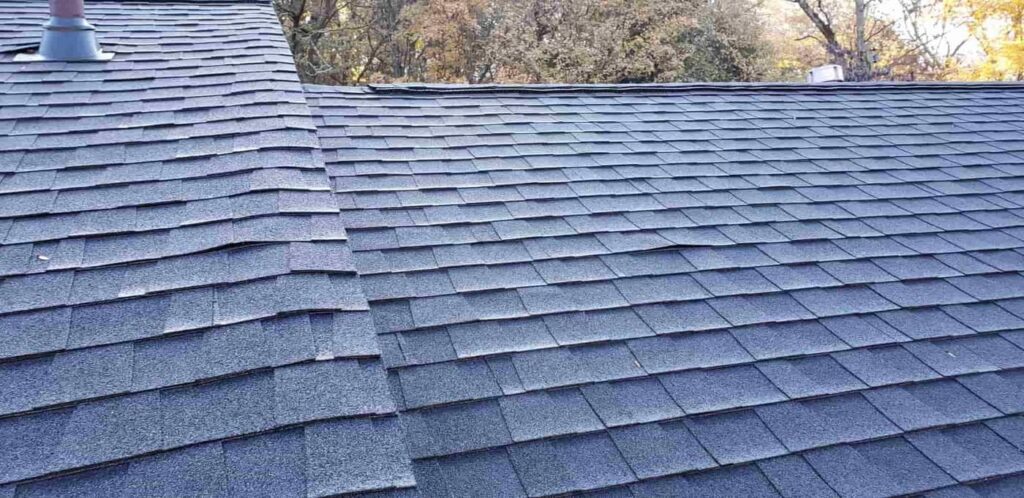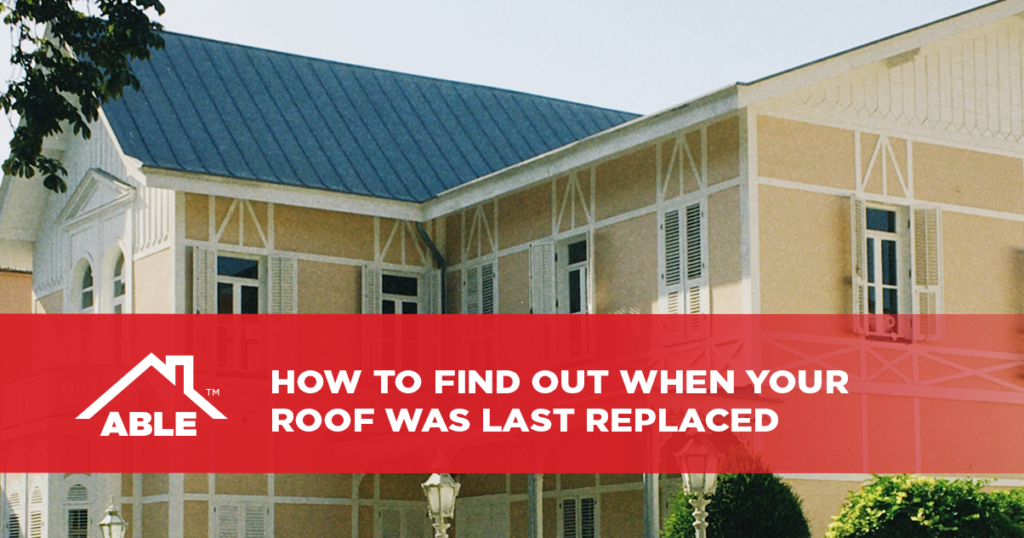Are you curious to know how long your roof is expected to last before it needs to be replaced? Well, you’re in luck! In this article, we will explore the average age of a roof before replacement and provide some insights into what factors may affect its lifespan. So whether you’re a homeowner planning for the future or simply interested in learning more about roof maintenance, keep reading to discover all the essential information you need to know about your roof’s longevity.
Factors Affecting Roof Lifespan
Taking care of your roof is essential to ensure its longevity and protect your home from the elements. Several factors can affect the lifespan of your roof, including weather conditions, the type of material used, the quality of installation, and regular maintenance and upkeep.
Weather Conditions
One of the most significant factors that can impact the lifespan of your roof is the weather conditions it is exposed to. Extreme weather events such as heavy rain, strong winds, hailstorms, and snow can cause significant damage to your roof over time. In areas with frequent extreme weather, roofs tend to deteriorate more quickly.
Roof Material
The type of material used for your roof plays a crucial role in determining its lifespan. Different materials have varying durability and resistance to the elements. Some common roofing materials include asphalt shingles, wood shakes, metal roofing, clay or concrete tiles, and slate. Each material has its own set of advantages and disadvantages, which we will explore further in the next section.
Installation Quality
The quality of the installation is vital to the lifespan of your roof. A poorly installed roof can lead to premature damage and reduce its overall longevity. It is crucial to hire qualified and experienced professionals who can ensure proper installation techniques and attention to detail. Investing in quality installation can save you from expensive repairs or premature replacement down the line.
Maintenance and Upkeep
Regular maintenance and upkeep are essential to extend the lifespan of your roof. Neglecting routine inspections, cleaning, and repairs can result in minor issues escalating into major problems, leading to a decrease in the overall lifespan of your roof. It is important to address any signs of damage or wear promptly and conduct annual inspections to identify and address potential issues.
Roof Material and Lifespan
The choice of roof material is a significant factor in determining its lifespan. Here are some common roofing materials and their average lifespans:
Asphalt Shingles
Asphalt shingles are the most popular roofing material in the United States due to their affordability and versatility. On average, asphalt shingles can last between 15 to 30 years, depending on the quality of the shingles and the climate conditions in your area.
Wood Shakes
Wood shakes offer a natural and rustic charm to homes. However, their lifespan is relatively shorter compared to other materials, typically ranging from 20 to 40 years. Proper maintenance, including regular inspections and treatments, can help extend the lifespan of wood shakes.
Metal Roofing
Metal roofing has gained popularity in recent years due to its durability and energy efficiency. Depending on the type of metal used, metal roofs can last anywhere from 40 to 70 years. They are highly resistant to extreme weather conditions and require minimal maintenance.
Clay or Concrete Tiles
Clay or concrete tiles are known for their aesthetic appeal and longevity. These roofs can last anywhere from 50 to 100 years or even longer with proper care. However, they are more expensive than other roofing materials and require a structurally sound framework to support their weight.
Slate
Slate is one of the most durable and long-lasting roofing materials available. It can easily last over a century with proper maintenance. However, slate roofs are also the most expensive option and require specialized installation due to their weight and fragile nature.

Signs of an Aging Roof
Knowing the signs of an aging roof can help you identify potential issues and take appropriate action to maintain its lifespan. Here are some common signs to watch out for:
Curled or Missing Shingles
If you notice shingles that are curled, cracked, or missing, it may indicate that your roof is reaching the end of its lifespan. Curled shingles can be a result of aging or poor ventilation, and missing shingles can leave your roof vulnerable to water damage.
Exposed Nail Heads
Exposed nail heads are a clear sign of an aging roof. Over time, the materials surrounding the nails can deteriorate, leading to exposed nail heads. This can make your roof susceptible to leaks and further damage.
Granule Loss
Asphalt shingles often have granules on their surface, which help protect them from the sun’s UV rays. If you notice excessive granule loss in your gutters or downspouts, it may indicate that your shingles are nearing the end of their lifespan.
Leaks and Water Damage
Leaks are an obvious sign that your roof is in need of attention. Water stains on your ceiling or walls, mold or mildew growth, and damp spots in your attic are all signs of water damage and indicate that your roof may be compromised.
Sagging or Bowing
A sagging or bowing roof is a serious issue and typically indicates structural problems. If you notice any signs of sagging or bowing, it is important to have your roof inspected by a professional as soon as possible to prevent further damage.
Average Lifespan of Different Roof Materials
Knowing the average lifespan of different roof materials can help you make an informed decision when it comes to choosing the right material for your home. Here is a breakdown of the average lifespans for some common roofing materials:
Asphalt Shingles
As mentioned earlier, asphalt shingles typically last between 15 to 30 years. The lifespan can vary depending on factors such as the quality of the shingles and the climate conditions in your area.
Wood Shakes
Wood shakes have an average lifespan of 20 to 40 years. Regular maintenance, including treatments to prevent rot and insect damage, can help prolong their lifespan.
Metal Roofing
Metal roofing is known for its durability and can last anywhere from 40 to 70 years. With minimal maintenance, metal roofs can offer a long lifespan and excellent protection against the elements.
Clay or Concrete Tiles
Clay or concrete tiles are highly durable and can last between 50 to 100 years or more with proper care. Their long lifespan makes them an attractive option for homeowners looking for a roof with longevity.
Slate
Slate roofs are the longest-lasting roofing option, with an average lifespan of over a century. Proper installation and regular maintenance are crucial to ensure the longevity of a slate roof.
It is important to note that these are average lifespans, and individual factors such as installation quality, maintenance, and weather conditions can influence the actual lifespan of your roof.

Geographical Variations in Roof Lifespan
The lifespan of a roof can also vary depending on the geographical location and climate conditions. Let’s explore how different regions in the United States can affect the lifespan of your roof:
North
In northern regions with colder climates, roofs are often exposed to heavy snowfall and freezing temperatures. The weight of the snow and the constant freeze-thaw cycle can put additional stress on the roof, potentially reducing its lifespan. Roofing materials that are resistant to extreme cold and can easily shed snow, such as metal roofing or slate, are popular choices in these areas.
South
Southern regions experience hot and humid weather for a significant portion of the year. The intense heat and exposure to UV rays can cause roofing materials to deteriorate more rapidly. Choosing materials that are specifically designed to withstand high temperatures, such as metal roofing or clay tiles, can help extend the lifespan of your roof in these areas.
East Coast
The East Coast is prone to severe weather events such as hurricanes and tropical storms. These weather conditions can cause significant damage to roofs, especially those made with less durable materials. It is important to consider the impact of these weather events when choosing a roof material and ensure proper installation techniques that can withstand high winds and heavy rains.
West Coast
The West Coast experiences a range of climates, from Mediterranean-like weather in California to rainy conditions in the Pacific Northwest. Certain areas along the coast are also prone to wildfires. Choosing materials that are fire-resistant and can withstand both wet and dry conditions, such as metal roofing or concrete tiles, is a wise choice for homes on the West Coast.
Mountainous Areas
Mountainous areas often face extreme weather conditions, including heavy snowfall, high winds, and fluctuating temperatures. These conditions can cause rapid deterioration of roofing materials. Homeowners in mountainous areas should opt for materials that are specifically designed to withstand the unique challenges of these environments, such as metal roofing or slate.
It is important to consider the specific climate conditions in your region when selecting a roof material and to consult with roofing professionals who are familiar with the challenges of your geographical area.
Factors That Can Decrease Roof Lifespan
While you cannot control all factors that can affect the lifespan of your roof, being aware of them can help you take preventive measures. Here are some factors that can decrease the lifespan of your roof:
Poor Ventilation
Inadequate ventilation in your attic can lead to heat and moisture buildup, which can cause shingles to deteriorate prematurely. Proper ventilation is essential to regulate temperature and control moisture levels, ensuring the longevity of your roof.
Lack of Maintenance
Neglecting regular maintenance and inspections can result in minor issues going unnoticed. Over time, these issues can escalate and cause more extensive damage to your roof, reducing its lifespan. Regular cleaning, gutter maintenance, and prompt repairs are crucial to maintaining the health of your roof.
Improper Installation
A roof that is improperly installed is more susceptible to leaks, structural issues, and premature damage. It is important to hire experienced professionals who follow industry best practices to ensure that your roof is installed correctly.
Extreme Weather Events
Extreme weather events such as hurricanes, hailstorms, and tornadoes can cause significant damage to roofs. While you cannot control these events, investing in durable materials and taking preventive measures, such as installing impact-resistant shingles or reinforcing roof structures, can help minimize the impact of these events on your roof.
Subpar Materials
Using low-quality or subpar materials can significantly decrease the lifespan of your roof. It is important to invest in high-quality materials that are designed to withstand the elements and have a proven track record of durability.

Factors That Can Extend Roof Lifespan
Taking proactive measures and following best practices can help extend the lifespan of your roof. Here are some factors that can contribute to a longer-lasting roof:
Regular Inspections and Maintenance
Regular inspections allow you to identify and address any issues early on, preventing them from turning into major problems. Schedule annual inspections with a qualified roofing professional to ensure that your roof remains in good condition.
Quality Installation
Investing in quality installation by experienced professionals can save you from costly repairs or premature replacement. Proper installation techniques and attention to detail are crucial for the longevity of your roof.
Proper Ventilation
Adequate ventilation in your attic helps regulate temperature and control moisture levels. Proper airflow can reduce stress on your roof and help extend its lifespan. Consult with a roofing professional to ensure that your attic ventilation is up to standard.
Choosing Durable Materials
Selecting durable materials that are suited to your climate conditions can significantly extend the lifespan of your roof. Consider factors such as impact resistance, fire resistance, and resistance to extreme temperatures when choosing a roof material.
Applying Protective Coatings
Applying protective coatings to your roof can offer an additional layer of defense against the elements. Coatings such as UV-resistant coatings or reflective coatings can help prolong the lifespan of your roof by reducing heat absorption and protecting against sun damage.
When to Consider Roof Replacement
While regular maintenance and repairs can extend the lifespan of your roof, there comes a point when replacement is necessary. Here are some signs that indicate it may be time to consider roof replacement:
Advanced Age
If your roof has reached its expected lifespan according to the type of material used, it is generally a good time to consider roof replacement. Aging roofs become more prone to extensive damage and may no longer provide adequate protection.
Severe Damage
Significant damage caused by extreme weather events, fallen trees, or accidents may require full roof replacement. If the damage is extensive and cannot be properly repaired, replacement is often the best course of action.
Persistent Leaks
Persistent leaks that cannot be effectively repaired may indicate that your roof is no longer capable of providing a watertight barrier. If leaks continue to occur despite repair efforts, it may be time to consider a new roof.
Multiple Repairs
If your roof requires frequent or costly repairs, it may be more cost-effective in the long run to invest in a new roof. Constant repairs can become a financial burden, and a new roof will provide peace of mind and long-term protection.
Decreased Energy Efficiency
Older roofs may not provide adequate insulation and energy efficiency. If you notice a significant increase in your energy bills or have difficulty maintaining a comfortable indoor temperature, it may be time to consider roof replacement with more energy-efficient materials.

Tips for Extending Roof Lifespan
While a roof has a finite lifespan, there are steps you can take to extend its longevity. Here are some tips for prolonging the lifespan of your roof:
Regular Cleaning and Debris Removal
Regularly clean your roof to remove leaves, branches, and debris that can accumulate over time. Accumulated debris can hold moisture against the roof, leading to deterioration. Regular cleaning also allows you to inspect and identify potential issues early on.
Addressing Issues Promptly
Promptly address any signs of damage or wear to prevent minor issues from escalating. Repairing small leaks, replacing damaged shingles, and addressing other issues as soon as they are noticed can prevent more extensive damage and prolong the overall lifespan of your roof.
Annual Inspections
Schedule annual inspections with a qualified roofing professional to identify and address any potential issues before they become major problems. Regular inspections can catch minor issues early on and help you avoid costly repairs or premature replacement.
Gutter Maintenance
Keep your gutters clean and free from debris to ensure proper water drainage. Clogged gutters can cause water to back up and seep under your roof, leading to water damage and premature aging of your roof.
Applying Roof Coatings
Consider applying protective roof coatings, such as reflective coatings or sealants, to extend the lifespan of your roof. These coatings can offer added protection against the elements and help prolong the life of your roof.
Conclusion
Taking the necessary steps to maintain and care for your roof can significantly extend its lifespan and protect your home for years to come. Factors such as weather conditions, roof material, installation quality, and regular maintenance all play a role in determining how long your roof will last. By staying proactive and addressing issues promptly, you can enjoy a longer-lasting roof that provides reliable protection for your home. Remember to consult with roofing professionals to ensure proper installation and maintenance practices are followed, and always choose high-quality materials suited to your specific climate conditions. With proper care and attention, your roof can remain in excellent condition and provide you with peace of mind for many years.
